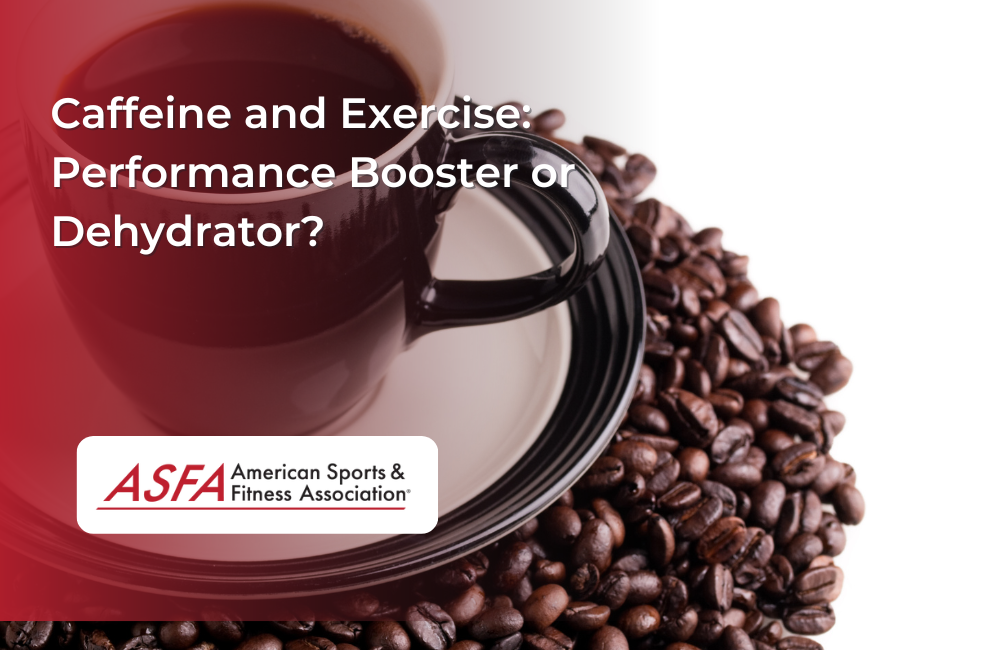Caffeine and Exercise: A Detailed Exploration of Its Benefits and Limitations for Athletic Performance
Caffeine is one of the most widely consumed stimulants globally, prized for its ability to boost alertness, enhance focus, and delay the onset of fatigue. It is also known to improve endurance exercise performance by enhancing physiological adaptations such as aerobic capacity and mechanical efficiency. For athletes and fitness enthusiasts, caffeine’s potential to improve aerobic performance is particularly appealing. However, while caffeine can offer several benefits, it’s important to understand that it is not a magic bullet for athletic performance. The effectiveness of caffeine varies depending on the type of exercise, the dosage, individual tolerance, and timing. In this comprehensive guide, we will delve into how caffeine impacts exercise performance, explore when it may help, and discuss scenarios where it could potentially hinder your efforts.
The Caffeine-Carryover Effect: Enhancing Endurance Exercise Performance
The “caffeine-carryover effect” refers to caffeine’s ability to enhance endurance performance by allowing athletes to train longer and at higher intensities. This effect is primarily beneficial for endurance activities where prolonged effort and stamina are crucial.
Mechanisms Behind the Caffeine-Carryover Effect:
-
Adenosine Receptor Blockade: Caffeine works by blocking adenosine receptors in the brain. Adenosine is a neurotransmitter that promotes relaxation and sleepiness. By inhibiting adenosine, caffeine reduces the perception of fatigue, allowing athletes to sustain effort over longer periods.
-
Increased Adrenaline Production: Caffeine stimulates the release of adrenaline (epinephrine), a hormone that prepares the body for intense physical activity. This “fight-or-flight” response increases heart rate, blood flow to muscles, and the release of glucose into the bloodstream, providing a quick source of energy.
-
Enhanced Fat Oxidation: Caffeine enhances the body’s ability to use fat as a fuel source during aerobic exercise. This process, known as fat oxidation, spares glycogen stores in the muscles, delaying fatigue and allowing athletes to perform at a higher intensity for longer.
Research Supporting the Caffeine-Carryover Effect:
-
Cycling Performance: Several studies have demonstrated that caffeine can significantly improve cycling performance. For example, one study found that cyclists who consumed 200 mg of caffeine before exercise were able to ride faster and for longer durations compared to those who did not consume caffeine. Another study showed that consuming 400 mg of caffeine before a brisk walk on an incline treadmill led to improved performance, with participants walking faster and reporting lower perceived exertion.
-
Running and Other Endurance** Sports:** Similar benefits have been observed in runners and athletes participating in other endurance sports. Caffeine has been shown to enhance time-trial performance, increase time to exhaustion, and improve overall endurance by reducing perceived effort and increasing energy availability.
Considerations:
-
Individual Variability: While the caffeine-carryover effect is well-supported by research, it’s important to recognize that not everyone experiences the same benefits. Factors such as genetics, habitual caffeine consumption, and individual tolerance can influence how caffeine affects performance. Some athletes may experience significant gains, while others may notice little to no difference or may even experience negative side effects such as jitteriness or gastrointestinal discomfort.
Caffeine Pharmacokinetics and Mechanism of Action: Understanding How It Works
Caffeine is a widely used stimulant that can have varying effects on exercise performance. To understand how it works, it’s essential to delve into its pharmacokinetics and mechanism of action.
Pharmacokinetics
When you consume caffeine, it is rapidly absorbed from the gastrointestinal tract, primarily from the small intestine but also in the stomach. This quick absorption means that caffeine appears in your bloodstream within minutes. It is effectively distributed throughout the body, easily passing through biological membranes, including the blood-brain barrier. Peak caffeine plasma concentrations typically occur between 30 to 120 minutes after ingestion, making it a fast-acting stimulant.
Mechanism of Action
Caffeine’s primary mechanism of action is through its effects on the central nervous system (CNS). It increases myofibrillar calcium availability, optimizes exercise metabolism, and enhances substrate availability. By antagonizing adenosine receptors, particularly A1 and A2A, caffeine prevents the usual calming effects of adenosine, leading to increased concentrations of neurotransmitters such as serotonin, dopamine, acetylcholine, norepinephrine, and glutamate. This cascade of neurotransmitter activity results in heightened alertness, reduced perception of effort, and improved muscle performance, making caffeine a potent ergogenic aid.
The Half-Life of Caffeine: Timing Your Intake for Optimal Performance
The half-life of caffeine is the amount of time it takes for half of the caffeine you've consumed to be metabolized and eliminated from your body. Understanding the half-life of caffeine is crucial for timing its intake to maximize its performance-enhancing effects.
Factors Influencing Caffeine's Half-Life:
-
Dosage: The more caffeine you consume, the longer it may stay in your system. Large doses of caffeine can take longer to metabolize, potentially leading to prolonged effects.
-
Individual Metabolism: Caffeine metabolism varies significantly among individuals. Factors such as age, liver function, pregnancy, and the use of certain medications can affect how quickly caffeine is broken down in the body. For example, smokers tend to metabolize caffeine faster, while pregnant women metabolize it more slowly.
-
Exercise and Physical Activity: Physical activity can influence how your body processes caffeine. Engaging in exercise may increase blood flow and speed up the metabolism of caffeine, although this effect can vary depending on the intensity and duration of the activity.
Practical Implications:
-
Timing for Peak Performance: The effects of caffeine typically peak within 30-60 minutes after consumption. For optimal performance, it's best to consume caffeine about 45 minutes to an hour before your workout. This timing allows caffeine to reach peak levels in the bloodstream, providing the maximum benefit during your exercise session.
-
Extended Effects: Depending on the individual, caffeine can remain in the system for several hours. If you consume caffeine late in the day, it may interfere with sleep, which can negatively impact recovery and overall performance. It's important to consider your daily schedule and avoid consuming caffeine too close to bedtime.
Example:
-
If a person consumes 400 mg of caffeine at 4 PM, they may still have about 200 mg of caffeine in their system by 10 PM, potentially leading to difficulty falling asleep. In contrast, someone who consumes a smaller dose, such as 100 mg, earlier in the day, may find that the effects wear off in time for a restful night's sleep.
The Type of Exercise Matters: Caffeine's Varied Effects on Different Activities and Exercise Intensity
Caffeine’s benefits are not universal across all types of exercise. While it can be highly effective for some activities, it may be less beneficial or even counterproductive for others.
Caffeine and Endurance Sports:
-
Aerobic Exercise: Caffeine is particularly beneficial for endurance sports, such as long-distance running, cycling, swimming, and triathlons. During aerobic activities, caffeine helps increase fat oxidation, allowing the body to use fat as a primary fuel source. This reduces the reliance on glycogen stores, which delays the onset of fatigue and improves overall endurance. When combined with endurance training, the physiological adaptations such as changes in muscle fiber composition and energy expenditure further enhance the benefits of caffeine.
-
Reduced Perceived Exertion: One of the key benefits of caffeine during endurance exercise is its ability to lower perceived exertion. Athletes report feeling less tired and more capable of maintaining their pace when they consume caffeine before or during prolonged physical activity. This effect can be particularly useful in competitive settings, where mental toughness and the ability to push through discomfort are crucial.
Caffeine and Strength/Power Sports:
-
Strength Training: The effects of caffeine on strength and power-based sports, such as weightlifting, powerlifting, and sprinting, are more mixed. While some studies suggest that caffeine can enhance power output and strength by stimulating the central nervous system, others have found little to no improvement in performance. The benefits of caffeine in these activities may depend on the specific type of exercise, the athlete’s experience level, and their individual response to caffeine.
-
Speed-Based Activities: In sports that require explosive power and quick bursts of energy, such as sprinting or high-intensity interval training (HIIT), caffeine’s stimulatory effects can be a double-edged sword. While it may increase alertness and energy, it can also lead to jitteriness, reduced fine motor control, and increased anxiety, which may impair performance in precision-based activities.
Hydration and Dehydration Concerns:
-
Diuretic Effect: Caffeine is a mild diuretic, meaning it can increase urine production and potentially lead to dehydration if not balanced with adequate fluid intake. This effect is particularly concerning during prolonged endurance events, where maintaining proper hydration is critical for performance and safety. Athletes who consume caffeine before or during exercise should be mindful of their fluid intake and ensure they are drinking enough water to stay hydrated.
Important Considerations:
-
Personalization: The type of exercise you’re engaging in should influence how and when you use caffeine. For endurance activities, caffeine can be a valuable tool for enhancing performance. For strength and power-based sports, the benefits may be more individualized, and athletes should experiment with different dosages and timing to find what works best for them.
Interindividual Variation in Response to Caffeine: Personalizing Your Approach
Interindividual variation in response to caffeine is substantial, and several factors contribute to this variability. Understanding these factors can help personalize your approach to caffeine supplementation.
Genetic Variation
Genetic differences play a significant role in how individuals metabolize and respond to caffeine. Variations in genes such as CYP1A2 and ADORA2A can affect caffeine metabolism, sensitivity, and overall response. For instance, individuals with certain genotypes may metabolize caffeine more slowly, leading to prolonged effects, while others may break it down more quickly. Genetic testing can provide insights into these variations, helping you tailor your caffeine intake for optimal performance.
Habitual Caffeine Intake
Your regular caffeine consumption habits can also influence how you respond to caffeine. Habitual caffeine intake can lead to tolerance, meaning you may require higher doses to achieve the same performance-enhancing effects. Conversely, individuals who do not regularly consume caffeine may experience more pronounced effects even at lower doses. Understanding your habitual intake can help you adjust your caffeine consumption to avoid tolerance and maximize benefits.
Other Factors
Several other factors contribute to interindividual variation in response to caffeine, including age, sex, body weight, and physical training status. For example, older adults may experience different effects due to age-related changes in metabolism and body composition. Similarly, your level of physical training can influence how your body processes and responds to caffeine. By considering these factors, you can personalize your caffeine strategy to suit your unique needs and optimize your athletic performance.
How Much Caffeine Is Too Much? Finding the Right Dosage
The optimal amount of caffeine needed to enhance performance varies depending on individual factors such as body weight, tolerance, and the specific demands of the sport. However, it’s crucial to understand the potential downsides of overconsumption.
Guidelines for Safe and Effective Caffeine Consumption:
-
General Recommendations: For most adults, a safe daily intake of caffeine is around 300-400 mg, equivalent to about 3-4 cups of coffee. Athletes looking to improve performance may benefit from consuming 3-6 mg of caffeine per kilogram of body weight before exercise. For example, a 70 kg (154 lb) athlete might consume between 210-420 mg of caffeine to enhance performance. Dosages might vary for intense exercise, as higher energy demands and fatigue resistance require careful management of caffeine intake.
-
Overconsumption Risks: Consuming too much caffeine can lead to a range of negative side effects, including anxiety, jitteriness, rapid heart rate, digestive issues, and insomnia. In extreme cases, excessive caffeine intake can lead to more serious health concerns, such as high blood pressure and cardiac arrhythmias.
-
Timing and Duration: Caffeine’s effects can last for several hours, so it’s important to time your intake strategically. Consuming caffeine too close to bedtime can interfere with sleep, which is critical for recovery and overall performance. Additionally, athletes who train multiple times a day should consider how caffeine intake in one session might affect subsequent workouts.
Tolerance and Sensitivity:
-
Building Tolerance: Regular caffeine consumers may develop a tolerance, meaning they require higher doses to achieve the same effects. This can lead to a cycle of increasing consumption, which may result in negative side effects and diminished returns. To avoid this, athletes may consider cycling their caffeine intake, using it strategically rather than habitually.
-
Caffeine Sensitivity: Some individuals are more sensitive to caffeine and may experience side effects even at lower doses. It’s important to start with a small amount and gradually increase to assess tolerance and determine the optimal dose for performance enhancement.
Caffeine and Dehydration: Weighing the Risks
Caffeine is often associated with dehydration, particularly in endurance exercise. However, the relationship between caffeine and dehydration is complex, and several factors influence this relationship.
Caffeine’s Diuretic Effect
Caffeine has a mild diuretic effect, which can lead to increased urine production and potential dehydration. This effect is typically more significant at high doses (greater than 200 mg) and in individuals who are not accustomed to regular caffeine consumption. While the diuretic effect is real, it is generally mild and can be managed with proper hydration strategies.
Exercise-Induced Dehydration
Exercise-induced dehydration is a significant concern in endurance exercise, where maintaining fluid balance is crucial for performance and safety. Caffeine can exacerbate this effect, particularly during prolonged, high-intensity exercise. However, the magnitude of caffeine’s impact on dehydration is usually small compared to other factors such as climate, exercise intensity, and individual variability.
Mitigating Dehydration Risk
To mitigate the risk of dehydration, athletes can take several proactive steps. Consuming caffeine in moderation and staying well-hydrated before and during exercise are essential strategies. Monitoring urine output and color can provide useful indicators of hydration status. Additionally, athletes might consider alternative sources of caffeine, such as caffeinated chewing gum or mouth rinses, which may have a lower diuretic effect. By balancing caffeine intake with adequate hydration, you can enjoy the performance benefits of caffeine without compromising your fluid balance.
By following this structured approach, the new sections are seamlessly integrated into the existing article, providing comprehensive and reader-friendly information on caffeine’s impact on exercise performance.
Caffeine Can Enhance Exercise, But It's Not a Substitute for Solid Training
While caffeine can certainly provide a performance boost, it’s essential to remember that it is not a replacement for proper training, nutrition, and recovery.
Caffeine as a Supplement, Not a Solution:
-
Complementing Training: Caffeine should be viewed as a supplement that can enhance your existing training regimen, not as a standalone solution for improving performance. The foundation of athletic success lies in consistent training, adequate rest, balanced nutrition, and proper hydration.
-
Avoiding Overreliance: Overreliance on caffeine can lead to diminished effectiveness and potential negative side effects. It’s important to use caffeine strategically, such as before key workouts or competitions, rather than as a daily crutch. This approach helps maintain its effectiveness and reduces the risk of developing a dependency.
Training Tips:
-
Focus on Fundamentals: Prioritize a well-rounded training program that includes cardiovascular conditioning, strength training, flexibility work, and recovery techniques. Proper training helps manage muscle fatigue, which is crucial for maintaining performance during prolonged physical exertion. Caffeine can enhance specific aspects of your performance, but it cannot replace the benefits of a comprehensive fitness plan.
-
Monitor Your Response: Keep track of how your body responds to different doses of caffeine and adjust accordingly. Some athletes may find that they perform better with a small dose, while others might benefit from a higher intake. Additionally, consider how caffeine affects your sleep, recovery, and overall well-being.
Conclusion
Caffeine can be a powerful tool in an athlete’s performance toolkit, offering benefits such as improved endurance, delayed fatigue, and enhanced mental focus. However, it’s important to recognize that caffeine is not a one-size-fits-all solution, and its effects can vary depending on the type of exercise, the dosage, individual tolerance, and timing.
To make the most of caffeine’s performance-enhancing properties, use it strategically and in conjunction with a solid training regimen. Understand your body’s response to caffeine, and adjust your intake to optimize your performance while minimizing potential downsides. Remember that caffeine can help you train harder and longer, but it is not a substitute for the dedication, consistency, and hard work required to achieve your athletic goals.
By approaching caffeine with a nuanced understanding of its benefits and limitations, you can harness its potential to enhance your training and competition outcomes, while avoiding the pitfalls of overreliance or misuse. Additionally, the effects of caffeine can vary for maximal exercise, with performance often peaking in the late afternoon and specific strategies needed to mitigate morning deficits.





